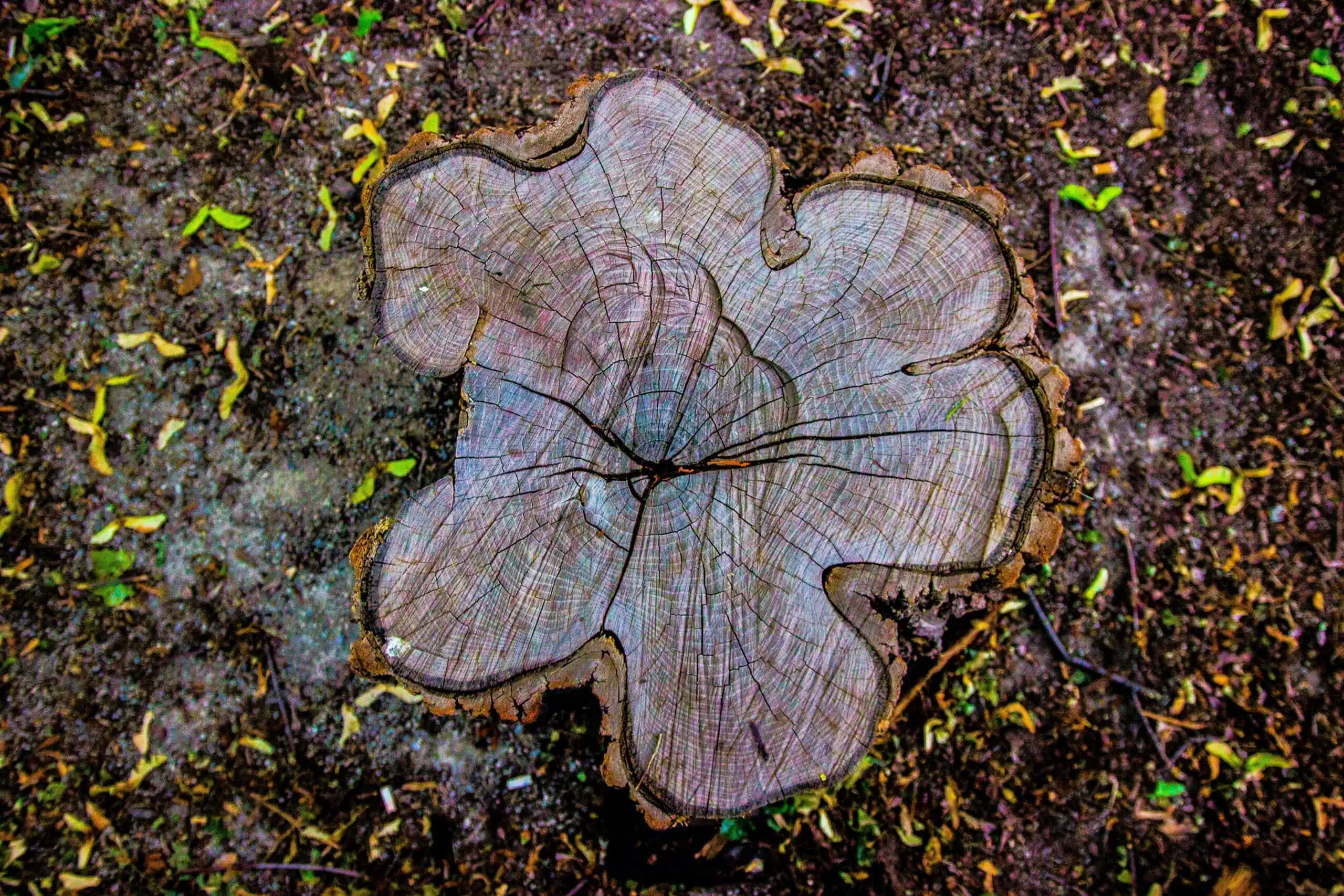Stump grinding is a crucial aspect of landscape management, particularly after tree removal. The process involves using specialised machinery to grind down tree stumps to below ground level, allowing for a seamless transition in the landscape. However, the effectiveness and efficiency of stump grinding can be significantly influenced by seasonal changes.
Each season presents unique conditions that can affect the soil, the health of surrounding vegetation, and the operational capabilities of the grinding equipment. Understanding these seasonal impacts is essential for homeowners and landscapers alike, as it can lead to better planning and execution of stump removal projects. In spring, for instance, the ground is often saturated from melting snow and spring rains, which can make it challenging for heavy machinery to operate without causing damage to the surrounding area.
Conversely, summer brings dry conditions that can harden the soil, making it easier for machinery to navigate but potentially leading to increased dust and debris. Autumn presents its own challenges, as fallen leaves can obscure stumps and create a slippery environment. Winter, while often seen as a dormant season for many plants, can also be an opportune time for stump grinding, provided that the ground is not frozen solid.
Each season thus has its own set of advantages and disadvantages that must be carefully considered when planning stump grinding activities. Stump grinding Surrey is a service offered by professional arborists in the UK.
The Advantages of Stump Grinding in Different Seasons
Each season offers distinct advantages for stump grinding, making it essential to evaluate the specific benefits associated with each time of year. In spring, for example, the soil is typically moist, which can facilitate easier grinding and quicker decomposition of the remaining wood chips. The moisture content in the soil can help reduce dust and debris during the grinding process, creating a cleaner work environment.
Additionally, spring is a time of growth for many plants, meaning that any disturbed areas can quickly recover as new vegetation begins to sprout. Summer, on the other hand, provides longer daylight hours and generally more stable weather conditions. This allows for extended working hours and potentially quicker project completion.
The dry conditions prevalent in summer can also make it easier to access stumps without causing significant damage to lawns or gardens. Furthermore, with many plants in full bloom during this season, homeowners may find it easier to visualise their landscaping goals post-grinding, allowing for more informed decisions about subsequent planting or landscaping projects. Autumn brings its own set of advantages as well.
The cooler temperatures make working conditions more comfortable for labourers, and the falling leaves can provide a natural mulch that helps protect the ground after stump removal. Moreover, autumn is often a time when many homeowners are preparing their gardens for winter, making it an ideal time to address any unsightly stumps that may detract from the overall aesthetic of the landscape. Finally, winter can be advantageous due to the lack of foliage on trees and shrubs, making stumps more visible and accessible.
The frozen ground can also provide a stable surface for heavy machinery, reducing the risk of soil compaction or damage to surrounding plants.
The Best Time for Stump Grinding in Spring
Spring is often heralded as a time of renewal and growth, making it an appealing season for stump grinding. As temperatures begin to rise and the snow melts away, the moisture content in the soil increases significantly. This moisture can be beneficial during the grinding process as it helps to soften the ground, allowing for easier penetration by grinding equipment.
The damp conditions also help to minimise dust production, which can be a significant concern during drier months. Consequently, spring can be an ideal time for homeowners looking to remove stumps without creating excessive mess. Moreover, spring is a period when many plants begin to awaken from their winter dormancy.
This means that any disturbed areas resulting from stump grinding have a higher likelihood of recovering quickly as new growth emerges. Homeowners can take advantage of this natural cycle by planning their landscaping projects around stump removal in spring. For instance, after grinding down a stump, they can immediately begin planting new flowers or shrubs that will thrive in the warm months ahead.
This proactive approach not only enhances the aesthetic appeal of the garden but also ensures that any bare patches left by stump removal are quickly filled with new life.
The Best Time for Stump Grinding in Summer
Summer presents a unique set of advantages for stump grinding that can be particularly beneficial for homeowners and landscapers alike. One of the most significant benefits during this season is the extended daylight hours, which allow for longer working days. This can lead to increased productivity and quicker project completion times.
Additionally, with generally stable weather patterns typical of summer months, there is less likelihood of rain disrupting scheduled workdays. The dry conditions prevalent in summer also contribute positively to stump grinding operations. With less moisture in the soil, heavy machinery can navigate more easily without causing significant damage to lawns or gardens.
However, it is essential to consider that dry soil may lead to increased dust production during grinding operations. To mitigate this issue, operators often employ water sprays or other dust control measures to maintain a clean working environment. Furthermore, summer is an excellent time for homeowners to visualise their landscaping goals as plants are in full bloom; this visualisation can guide decisions regarding new plantings or garden designs following stump removal.
Another advantage of summer stump grinding is that it allows homeowners to address any unsightly stumps before hosting outdoor gatherings or events. With many people spending more time outdoors during this season, having a clean and well-maintained landscape becomes increasingly important. By removing stumps in summer, homeowners can enhance their outdoor spaces and create inviting environments for family and friends.
The Best Time for Stump Grinding in Autumn
Autumn is often overlooked as a prime season for stump grinding; however, it offers several unique advantages that make it an excellent choice for this type of work. As temperatures begin to cool down, working conditions become more comfortable for labourers who may have been affected by the heat during summer months. This comfort can lead to increased efficiency and productivity on job sites.
Additionally, autumn presents an opportunity to prepare gardens and landscapes for winter while simultaneously addressing any unsightly stumps left behind from previous tree removals. The falling leaves during this season can serve as a natural mulch that helps protect disturbed areas after stump grinding has taken place. This mulch not only aids in moisture retention but also suppresses weed growth during the colder months ahead.
Moreover, autumn is an ideal time for homeowners looking to plan their landscaping projects for the following spring. By removing stumps in autumn, they can take advantage of the cooler weather to prepare their gardens for new plantings once spring arrives. This proactive approach allows homeowners to maximise their landscaping efforts and ensure that their outdoor spaces are ready for growth when warmer weather returns.
The Best Time for Stump Grinding in Winter
While winter may seem like an unlikely time for stump grinding due to cold temperatures and potential snow cover, it can actually present several advantages for this type of work. One significant benefit is that the ground may become frozen solid during winter months, providing a stable surface for heavy machinery to operate without causing soil compaction or damage to surrounding vegetation. This stability allows operators to navigate more easily around stumps without worrying about creating ruts or other disturbances in the landscape.
Furthermore, with many trees and shrubs devoid of foliage during winter, stumps become more visible and accessible than at other times of the year. This visibility allows operators to identify stumps more easily and plan their grinding operations accordingly. Additionally, winter often sees fewer landscaping activities taking place; thus, scheduling stump grinding during this season may result in less competition for equipment and labour resources.
However, it is essential to consider that extreme cold or heavy snowfall may hinder operations during winter months. Operators must be prepared with appropriate equipment and strategies to manage these challenges effectively. For instance, using heated machinery or ensuring proper maintenance of equipment can help mitigate potential issues related to cold weather.
Factors to Consider When Choosing the Best Time for Stump Grinding
When determining the optimal time for stump grinding, several factors must be taken into account beyond just seasonal considerations. One critical aspect is the type of tree that was removed; different species decompose at varying rates and may require specific timing for effective stump removal. For example, hardwoods like oak may take longer to decay than softer woods like pine; thus, understanding these differences can inform decisions about when to grind stumps.
Soil conditions also play a vital role in determining the best time for stump grinding. Soil moisture levels can significantly impact both the ease of operation and the potential damage caused by heavy machinery. Homeowners should assess their local weather patterns leading up to planned stump grinding activities; if prolonged rain has saturated the ground or if drought conditions have hardened it excessively, adjustments may need to be made regarding scheduling.
Additionally, local regulations or community guidelines may influence when stump grinding can occur. Some areas have restrictions on noise levels during certain hours or days of the week; thus, understanding these regulations is crucial for ensuring compliance while minimising disruption to neighbours.
Finding the Optimal Time for Stump Grinding
In conclusion, selecting the best time for stump grinding involves careful consideration of various factors including seasonal impacts, soil conditions, tree species characteristics, and local regulations. Each season presents its own unique advantages and challenges that must be weighed against individual project requirements and goals. By understanding these dynamics and planning accordingly, homeowners can optimise their landscaping efforts while ensuring efficient and effective stump removal processes throughout the year.
Ultimately, whether one chooses spring’s rejuvenating moisture, summer’s extended daylight hours, autumn’s preparation opportunities or winter’s stable ground conditions will depend on specific circumstances surrounding each project. By taking a comprehensive approach that considers all relevant factors involved in stump grinding decisions—homeowners will be better equipped to achieve successful outcomes while enhancing their outdoor spaces year-round.
When considering the best time for stump grinding, it is important to also think about the potential use of tree stump killer. In a helpful article from Grind My Stump, they provide valuable information on how to effectively use SBK tree stump killer to aid in the removal process. This additional step can be crucial in ensuring that the stump is completely eradicated and does not regrow in the future. By following their expert advice, you can achieve a thorough and long-lasting solution to your stump problem.

